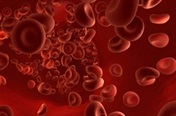
HIV/AIDS doesn’t discriminate – anyone can get it and it’s one of the world’s most serious health threats.
South Africa remains the country with the highest number of people living with HIV in the world. With approximately 7.9 million people of all ages living with HIV, stemming the HIV/AIDS epidemic in this country remains an ongoing challenge.
In 2016, an estimated 36.7 million people were living with HIV across the globe. According to UNAIDS, 1.8 million people became newly infected with HIV in 2016, while 1 million people died from AIDS-related illnesses in the same year. Approximately two-thirds of new cases occurred in sub-Saharan Africa.
Other regions significantly affected by HIV/AIDS include Asia and the Pacific, Latin America and the Caribbean, as well as Eastern Europe and Central Asia.
Worldwide, most infections are transmitted between heterosexual partners. In some countries, men who have sex with men, injecting drug users, sex workers, transgender people and prisoners are disproportionally affected by HIV. People with sexually transmitted infections (STIs) are also far more vulnerable than others to becoming infected with HIV. Sores on the genitals create an entry point for the virus.
HIV primarily affects people in their most productive years, with a third of new infections occurring among people between the ages of 15 and 24. HIV annual incidence among South African adults aged 15 to 49 years is 0.79%, with more women being affected than men. The disparity in HIV prevalence by sex is most pronounced among young adults: HIV prevalence among 20 to 24 year-olds is three times higher among females (15.6%) than males (4.8%).
HIV prevalence among Black Africans is 16.6%; followed by Coloureds (5.3%); Whites (1.1%); and Indian/Asian (0.8%).
In this country, HIV prevalence among pregnant women has hovered around 30%, but reaches towards 50% in some provinces. KwaZulu-Natal has the highest number of people living with HIV, followed by Mpumalanga, Gauteng and the Free State. The Western and Northern Cape provinces have the lowest prevalence rates.
The good news is that significant progress has been made in terms of managing the pandemic. By mid-2017, 20.9 million people globally were receiving antiretroviral therapy (ART), according to the World Health Organization (WHO). But, despite this success, almost half of all people in need worldwide are still awaiting treatment.
South Africa has the largest ARV therapy programme in the world, with about 4.2 million people on treatment. Thanks to improved access to ART, AIDS-related deaths have decreased significantly over the last few years and life expectancy has increased. While this illustrates formidable success, approximately 2.9 million South Africans still need ART.
Read more
Progression of HIV/AIDS
Reviewed by Dr Pooja Balani, MBBS (UK). Medical Technical Advisor at the Southern African HIV Clinicians Society. March 2018.




 Publications
Publications
 Partners
Partners
















